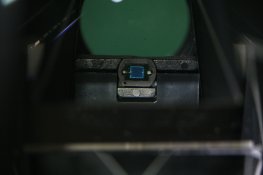@Photomultiplier sorry, looks like most of the comments are not addressing your original problem. Personally, I think it's quite bizarre what you're seeing. Can't think of anything even hypothetically plausible and I'll be watching this thread with great interest.
I do have an interesting experiment in mind though. What happens if you mount a waist level finder and measure light directly off the focusing screen using your Sekonic? Obviously the reading won't be accurate or even meaningful, but at least you can repeat this procedure for different lenses and see if the pattern persists. This way you'll isolate one variable (prism meter).
I do have an interesting experiment in mind though. What happens if you mount a waist level finder and measure light directly off the focusing screen using your Sekonic? Obviously the reading won't be accurate or even meaningful, but at least you can repeat this procedure for different lenses and see if the pattern persists. This way you'll isolate one variable (prism meter).









